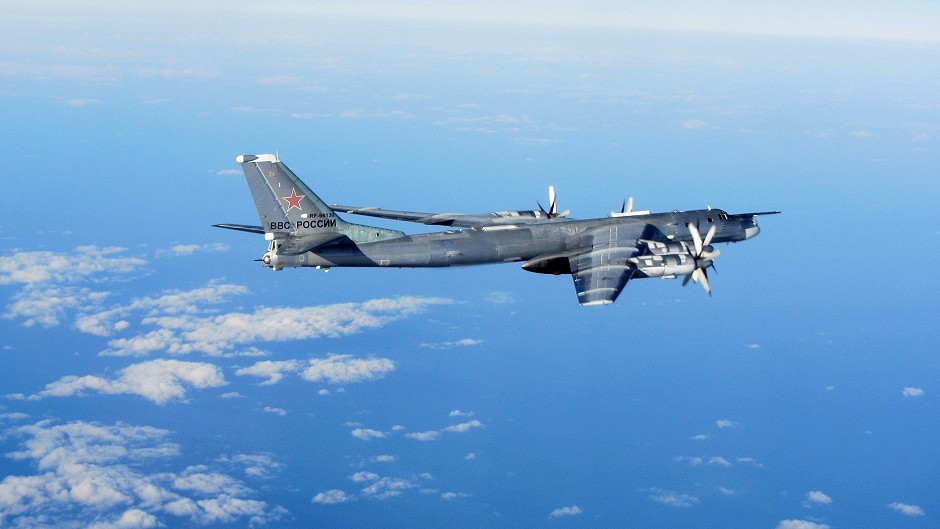Typhoon jets from RAF Lossiemouth have been scrambled to intercept Russian bombers and escort them through UK airspace.
Two fighters responded to the “Bear” aircraft as part of the Moray base’s new role as the frontline of Britain’s air defences.
Nato chiefs revealed the incident was part of an “unusual level” of Russian activity in the area.
Eight planes were initially spotted flying in formation over the North Sea before six turned back.
Nato said the incident posed a “potential risk” to passenger plane because the Russian military had not filed flight paths or made radio contact with air traffic control.
Ministry of Defence sources confirmed to the Press and Journal that the RAF Lossiemouth jets had not been responsible for a reported sonic boom over the Western Isles on the same day.
The interception was made amid heightened tensions between the West and its former Cold War enemy since the recent conflict in Ukraine.
The incident on Wednesday happened around the same time as two Typhoons from RAF Coningsby were sent to escort a suspicious Latvian cargo plane to Stansted Airport in Essex.
RAF Lossiemouth took on its new responsibility as the Quick Reaction Alert (Interceptor) North in September, responding to any threats to northern UK airspace.
Moray MP Angus Robertson, the SNP defence spokesman, said he expected more such incidents over the coming weeks and months.
“Yesterday’s interception of Russian aircraft using Typhoons from RAF Lossiemouth will likely be one of many in the future due to a marked increase in activity,” he said.
“The base is ideally suited and located for the task and as always the crews acted with complete professionalism.”
Mr Robertson also highlighted the unannounced arrival in the Moray Firth of Russia’s largest aircraft carrier, the Admiral Kuznetsov, and its support vessels, twice in the last two years.
Last week, Swedish armed forces launched a search of waters near Stockholm amid suspicions that a Russian submarine was in trouble.
Mr Robertson said: “Vigilance in the skies needs to be matched in the seas – and as the visits of the Russian navy to the Moray Firth in recent years shows, the Royal Navy is far too slow to respond as not a single major conventional warship is based in Scotland.”
A total of eight Russian aircraft were intercepted in the area on Wednesday, according to Nato, which said radars tracked them flying in formation over the North Sea.
F-16s from the Royal Norwegian Air Force were scrambled and intercepted the aircraft, which included four Bear bombers and four tanker planes.
The formation flew from mainland Russia over the Norwegian Sea in international airspace.
Six turned back towards Russia, while two continued south-west, parallel to the Norwegian coast, and continued over the North Sea until they met the Lossiemouth Typhoons.
Russian aircraft have been intercepted by Nato forces more than 100 times this year, with 19 such incidents on Wednesday.
In a statement, Nato said: “These sizeable Russian flights represent an unusual level of air activity over European airspace.”
It added: “The bomber and tanker aircraft from Russia did not file flight plans or maintain radio contact with civilian air traffic control authorities and they were not using onboard transponders.
“This poses a potential risk to civil aviation as civilian air traffic control cannot detect these aircraft or ensure there is no interference with civilian air traffic.”
